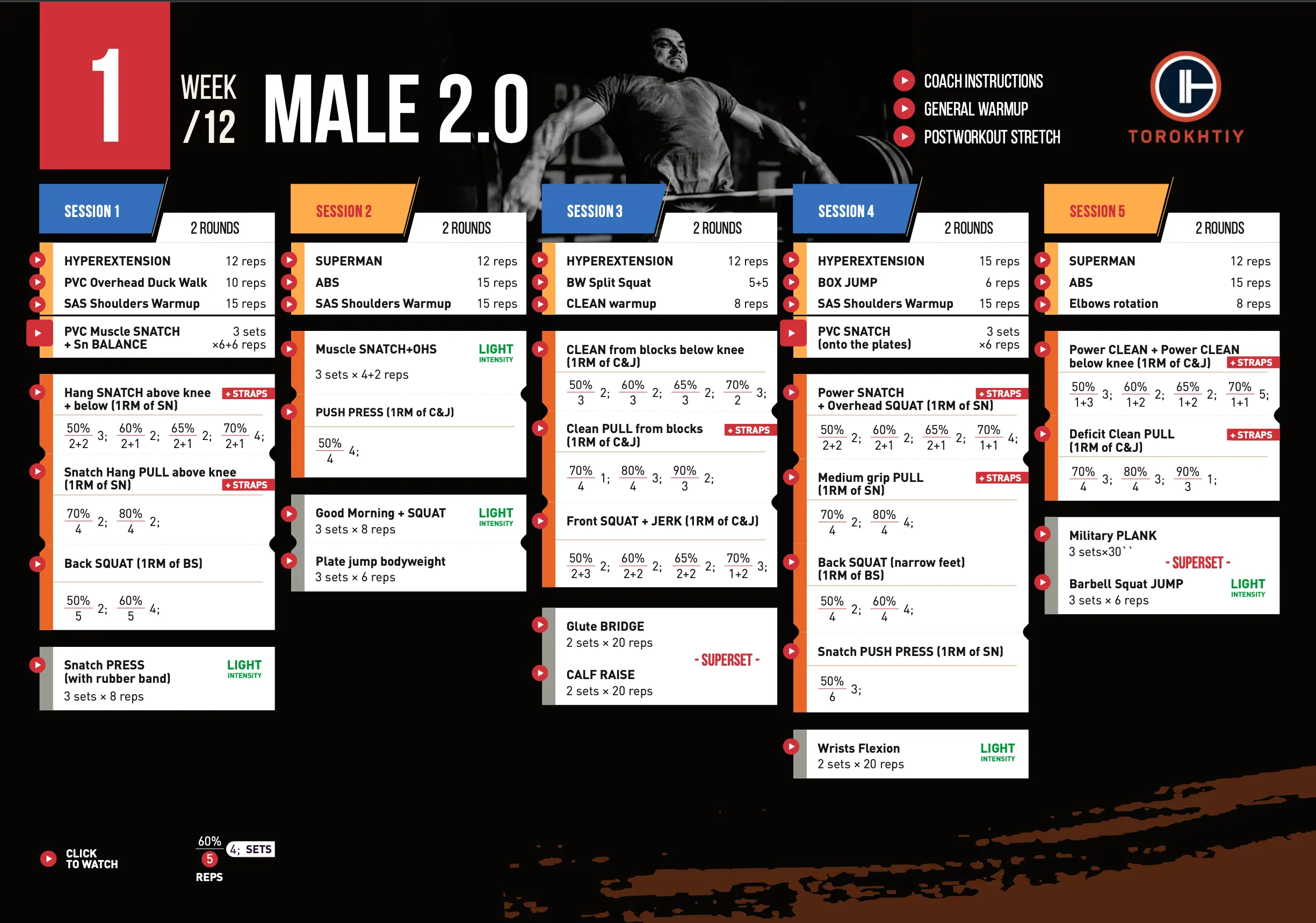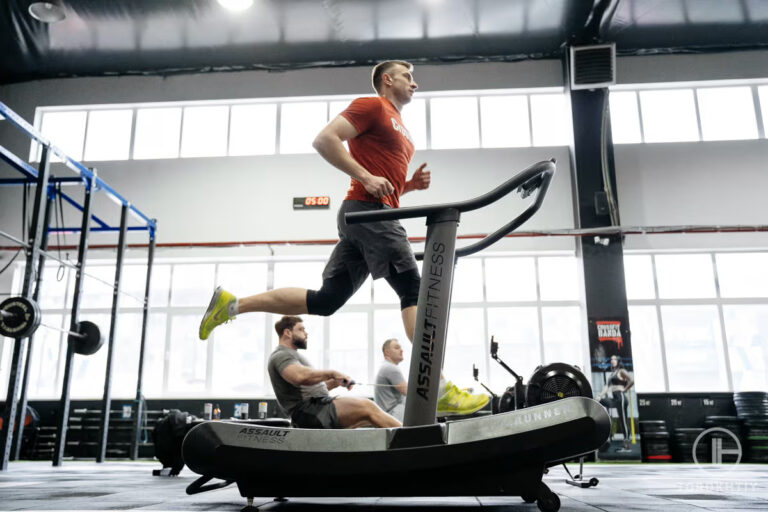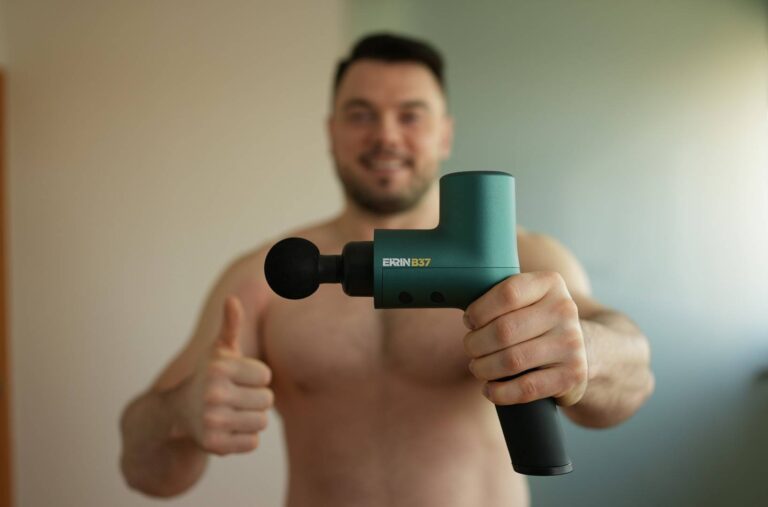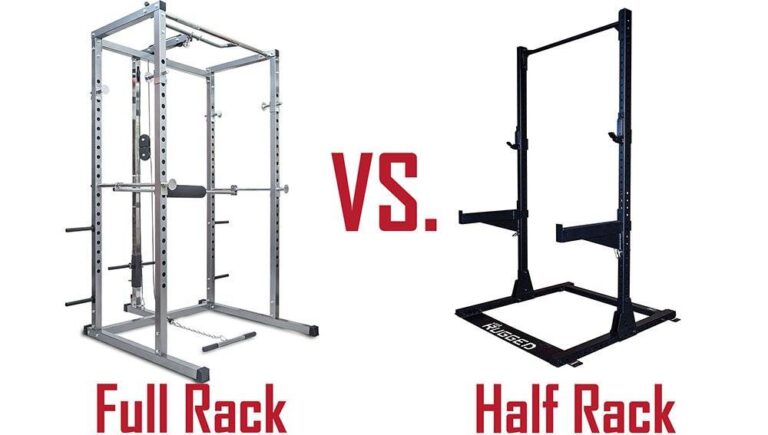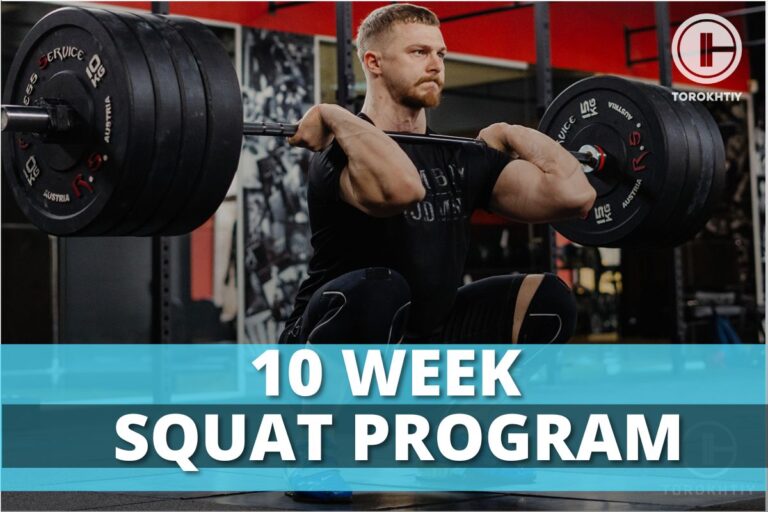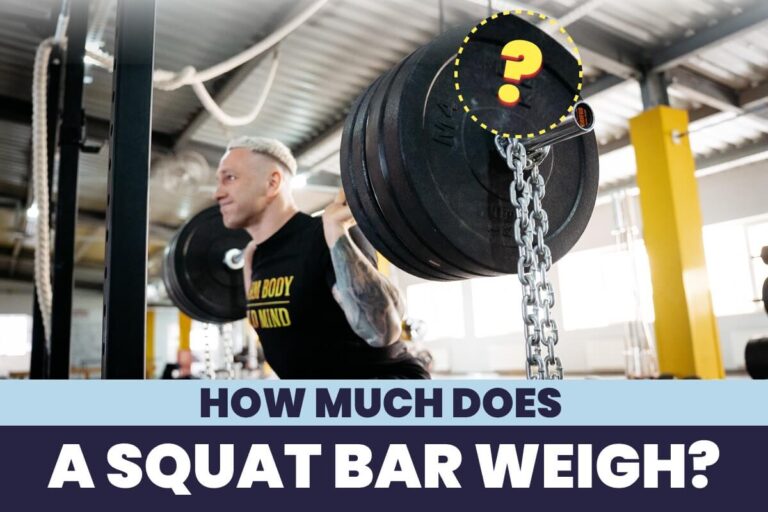Muscle Work In Weightlifting

Each weightlifting trainer hears this question from newbies: “What muscles will I gain when I start weightlifting?” And the answer they receive is: “The weightlifting essense doesn’t lie in muscle gain, but in the motor skills development in order to lift a heavy barbell in two exercises: snatch and clean & jerk. But when performing these two exercises, absolutely all the muscles in the body work. ”
This is a very surprising fact to many people in different ways. Someone is surprised by the fact that one needs to jump in weightlifting, while others don’t understand how the result depends on the technique that much.
In order to understand weightlifting and even to fall in love with it, one needs to work out for a while: master the technique, feel the barbell itself, learn how to properly put effort and develop power in the power position. And this is not easy at all, even quite difficult I would say. For this, the correct algorithm for learning the exercises and an understanding of the snatch and clean & jerk essense are important.
Athletes practicing weightlifting are often called strong as the TOP athletes lift fantastic weights that are 3 times higher than their body weight. But it takes less than 2 seconds in the snatch from the moment the barbell leaves the platform to its fixation above the head – meaning that the weightlifters are also fast.
Anyone who has ever performed overhead squat can imagine what accuracy and balance are required to catch a barbell above head at the maximum speed – this means that the weightlifters are coordinated and flexible. And despite the fact that weightlifters are not the best marathon runners, during a workout, which can last more than 2 hours, athletes have to perform sets with possibly 5-6 repetitions that are difficult to coordinate, which suggests that the development of strength endurance in weightlifting is okay.
During my seminars, when we analyze the technique, I explain our muscles peculiarities in terms of muscle physiology and the nervous system functioning.
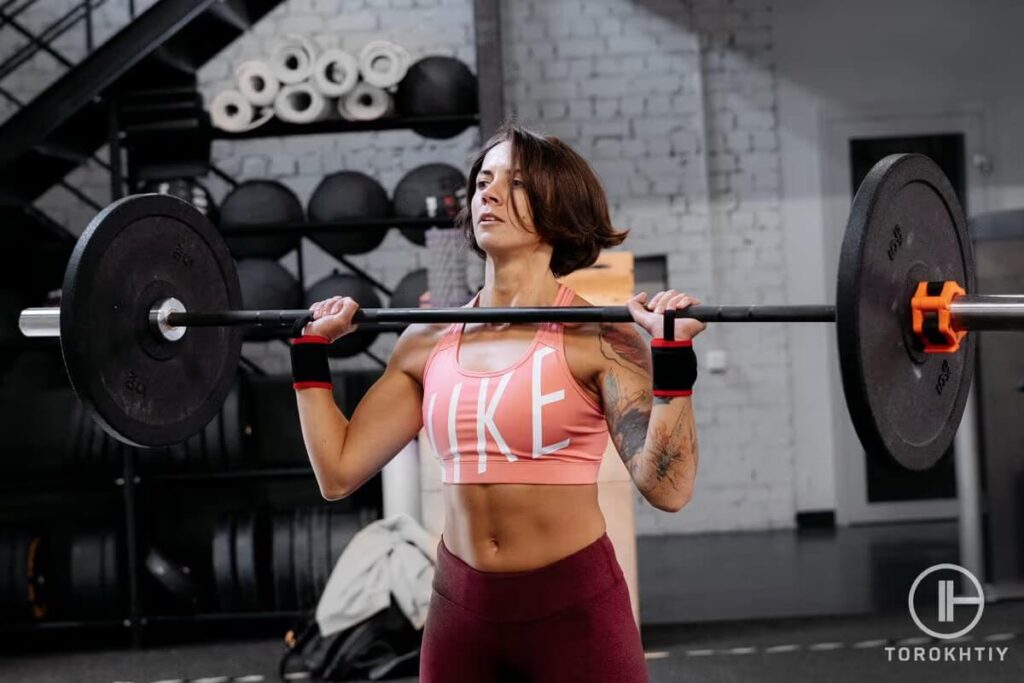
There are THREE features that I always focus on.
1. During the barbell lifting, the torso, legs and arms muscles are involved. And here comes the most interesting thing: all these muscles work simultaneously but in completely different modes. Legs work in a dynamic and explosive mode: their main task is to accelerate the barbell and transmit the impulse during the power position. The back and trunk muscles work in a static mode: their task is to maintain the necessary position: in the snatch and clean – to cover the barbell; in the jerk – to maintain the optimal vertical body position.
Well, the most “unexpected” for many beginners is the fact that the arms muscles need to be relaxed all the time during the pull. Of course, the arms work is very important – we hold the barbell with our arms, but our arms practically do not make any effort when the barbell is lifted before power position, but this does not mean that the arms do not do anything. They control the barbell trajectory all the way and receive it at the moment of fixation.
Legs – dynamics, torso – static, arms – relaxation and control: for the beginner’s nervous system this is a shock. The athlete tries to strain everything in order to maximize the strength and then the coach says: “relax your arms …. how to do it? And then to repeat all this during the competition and with the maximum weight …. I hope you understand now why I always ask you not to rush when learning how to perform snatch and clean & jerk.
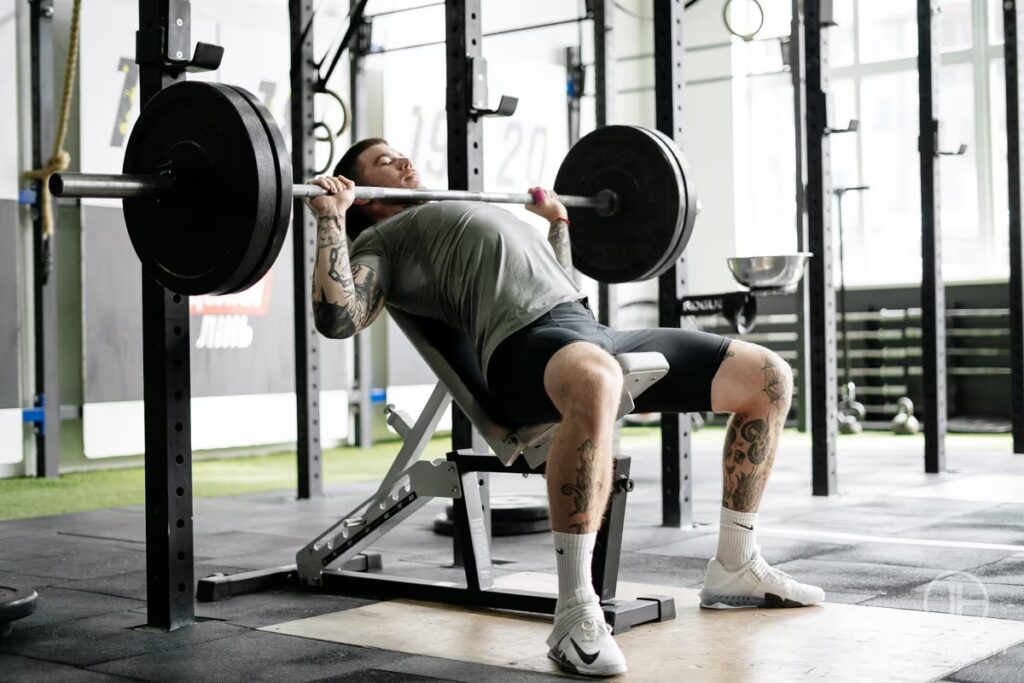
2. The snatch lasts about 2 seconds. That is, almost a lightning movement, but only for someone who does not understand anything in weightlifting. The snatch consists of 8 phases, which the athlete learns in parts first and then combines into one exercise. And I remember very well how the coach made us do everything slowly and accurately first. He always explained to us that the human brain is not able to control the movement faster than 0.6 seconds: while the power position, for example, lasts from 0.3 to 0.6 s.
That is, if you didn’t understand and slowly learned how to correctly execute the technique element, then you will not be able to execute it properly at maximum speed. The same goes to all the exercise phases. Therefore, in our national team, at least once a week, we had a “technical day” – we called it choreography. At this training session, we performed exercises with PVC slowly and deliberately – this helps a lot in developing the technique. I recommend it to everybody!
3. When sports physiologists came to our camps and performed the research, we were told and explained many interesting things about how our body works: how the body reacts to the load, how the movement is controlled, and what the sports result depends on. One of such interesting discoveries for me was that the right hemisphere of the brain is responsible for the movement analysis and understanding, and the left hemisphere is responsible for the exercise itself.
🔻12-Week Olympic Weightlifting Program by Oleksiy Torokhtiy
Transform your strength and technique with our 12-week Olympic Lifting Program, made up of 5 sessions per week.
It is designed by Olympic Champion for athletes who are looking to set new personal records safely in Snatch or Clean & Jerk.
Program details:
- 12 weeks + 2 bonus weeks
- 45-120 minutes per session
- 50+ specific exercises/98 video instructions
- Primary focus on Olympics Lifts
- Full access to all training content
- Weekly video coach instructions
Start now and boost your weightlifting results!
We were told that we need to first move the movement in our head, think over all the details, tune in, and during the exercise, the mind must be clear. “As soon as you took the starting position – you just lift the barbell and nothing else!” – this is what the trainers and scientists taught us.
I do not want to frighten anyone with the complexity of weightlifting, I just try to share my simple experience in simple words and convey the message that one needs to be wise and correct in one’s training. That is exactly why all my articles end with this motto:
TRAIN TOGETHER – TRAIN RIGHT!
You might be interested in:
Why Trust Us?
With over 20 years in Olympic Weightlifting, our team does its best to provide the audience with ultimate support and meet the needs and requirements of advanced athletes and professional lifters, as well as people who strive to open new opportunities and develop their physical capabilities with us.
By trusting the recommendations of our certified experts in coaching, nutrition, dietology, and sports training programming, as well as scientific consultants, and physiotherapists, we provide you with thorough, well-considered, and scientifically proven content. All the information given in the articles concerning workout programming, separate exercises, and athletic performance, in general, is based on verified data. We ensure that you can rely on our professionals’ pieces of advice and recommendations that can be treated as personalized ones which will benefit you and fully meet your needs.
The product testing process is described in more detail here
Author: Sergii Putsov
Head of Sport Science, PhD
Best Results: Snatch – 165 kg,
C&J – 200 kg
Sergii Putsov, Ph.D., is a former professional weightlifter and National team member, achieving multiple medals in the 94 kg weight category at national competitions. With a Master’s degree in “Olympic & Professional Sport Training” and a Sport Science Ph.D. from the International Olympic Academy, Greece, Sergii now leads as the Head of Sport Science. He specializes in designing training programs, writing insightful blog articles, providing live commentary at international weightlifting events, and conducting educational seminars worldwide alongside Olympic weightlifting expert Oleksiy Torokhtiy.

